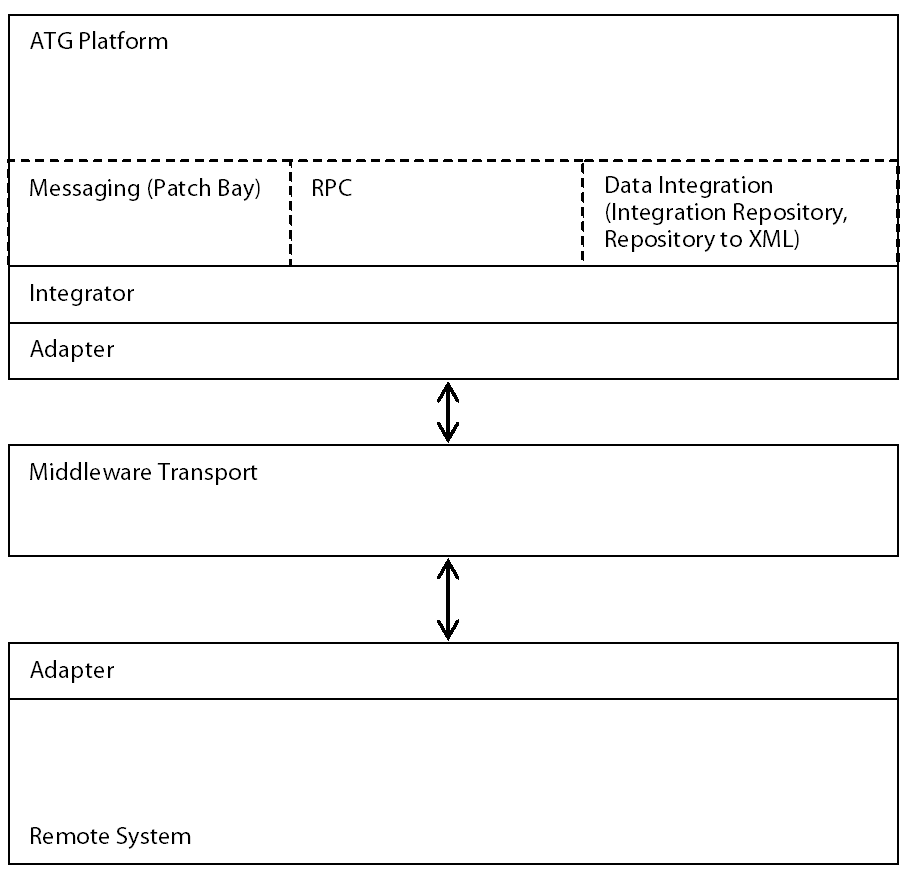In addition to the Oracle ATG Web Commerce Web Services functionality discussed in the preceding chapters, the Oracle ATG Web Commerce platform includes a more generalized framework that enables you to integrate your applications with remote software systems for cases where using Web Services might not be appropriate. For example, you could use the integration framework to integrate an ATG Commerce application with an order-processing system. When a customer places an order through ATG Commerce, the order data can be transferred to the order-processing system, and the Oracle ATG Web Commerce platform can trigger events that invoke the processing facilities in the remote system.
The integration framework involves several key facilities that you can use to integrate Oracle ATG Web Commerce applications with remote systems:
JMS messaging, configured through Patch Bay, to enable the Oracle ATG Web Commerce platform to trigger events in the remote system, or the remote system to trigger events in the Oracle ATG Web Commerce platform.
Remote Procedure Calls (RPC), for inter-application command execution. For example, the Oracle ATG Web Commerce platform can use RPC to query an inventory management system.
Data integration. Refer to the ATG Web Services Guide Repository to XML Data Binding section.
You can use these facilities individually, but a typical integration will use all of these facilities together. For example, the Integration Repository typically uses RPC to execute the commands used to move data between the Oracle ATG Web Commerce platform and the remote system.
Integrators and Adapters
Integrating the Oracle ATG Web Commerce platform with a remote system generally involves additional software to handle the communication between the two systems:
A middleware transport layer, such as Tibco or MQ
Adapters that enable the Oracle ATG Web Commerce platform and the remote system to communicate through the middleware transport layer
An integrator that implements the Integration Framework’s queries and commands in a form understood by the remote system, enabling the two systems to interoperate and share data
The following figure illustrates the Oracle ATG Web Commerce integration architecture:

You can write adapters and integrators by implementing the various APIs described in this manual. Note that Oracle ATG Web Commerce adapters handle only the communication between the Oracle ATG Web Commerce platform and the middleware transport. Adapters for communication between a remote system and a middleware transport are typically available from the company that develops the remote system or the middleware.

